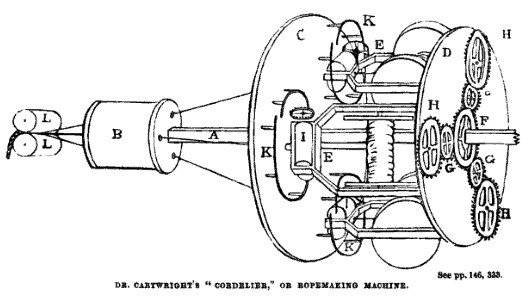Starting a non-profit animal rescue can be a deeply rewarding journey. As you embark on this noble endeavor, passion and dedication will be your driving forces. To begin, research the legal requirements for establishing a non-profit organization. Next, create a detailed business plan that outlines your mission, goals, and strategies. Remember, the key to success lies in your unwavering commitment to the cause. Let’s delve into the essential steps on how to start a non-profit animal rescue.
How to Start a Non-Profit Animal Rescue: A Guide for Animal Lovers
Do you have a passion for animals and a desire to make a difference in their lives? Starting a non-profit animal rescue can be a rewarding and impactful way to help our furry friends in need. In this guide, we will walk you through the steps to start your own non-profit animal rescue organization and make a positive impact on the animal community.
Step 1: Define Your Mission and Vision
Before diving into the world of animal rescue, it’s essential to define your organization’s mission and vision. What are the primary goals of your animal rescue? Are you focusing on rescuing a specific type of animal, such as dogs, cats, or exotic animals? How do you envision making a difference in the lives of these animals?
By clearly defining your mission and vision, you will be able to set goals, develop strategies, and communicate your organization’s purpose to potential supporters and volunteers.
Step 2: Research and Planning
Once you have a clear mission in mind, it’s time to do some research and planning. Start by researching the animal rescue landscape in your area. Are there other animal rescues already operating? What are the needs of the animal community in your area?
Next, develop a detailed business plan for your non-profit animal rescue. This plan should outline your organization’s structure, budget, fundraising strategies, and marketing plan. Having a solid plan in place will help you stay organized and focused as you start your animal rescue.
Step 3: Establish Legal and Organizational Structure
Before officially launching your non-profit animal rescue, you will need to establish a legal and organizational structure. This includes registering your organization as a non-profit, obtaining any necessary permits or licenses, and setting up a board of directors.
Consult with a lawyer or non-profit advisor to ensure that you are following all legal requirements for starting a non-profit organization. Choose a board of directors who are passionate about your mission and bring diverse skills and expertise to the table.
Step 4: Fundraising and Financing
One of the most critical aspects of running a non-profit animal rescue is fundraising and financing. Without financial support, it can be challenging to provide care and support to the animals in need. Consider different fundraising strategies, such as hosting events, applying for grants, and seeking donations from individuals and businesses.
Don’t forget to create a budget for your animal rescue to track expenses and ensure that you are using your funds wisely. Transparency in financial matters is essential for gaining the trust of donors and supporters.
Step 5: Building a Team of Volunteers
Animal rescues rely heavily on the dedication and hard work of volunteers. Building a strong team of volunteers who are passionate about animal welfare is crucial to the success of your organization. Reach out to your community, local schools, and businesses to recruit volunteers who can help with animal care, fundraising, marketing, and more.
Provide training and support to your volunteers to ensure that they have the knowledge and skills needed to make a positive impact on the animals in your care. Recognize and appreciate the hard work of your volunteers to maintain a positive and supportive work environment.
Step 6: Finding Homes for Rescued Animals
The ultimate goal of an animal rescue is to find loving and permanent homes for the animals you rescue. Develop a thorough adoption process to ensure that potential adopters are a good fit for the animals in your care. Conduct home visits, reference checks, and follow-ups to ensure that the animals are going to a safe and caring environment.
Utilize online platforms, social media, and local events to promote the animals available for adoption. Engage with the community to raise awareness about the importance of adopting animals from shelters and rescues.
Step 7: Building Relationships with the Community
Building strong relationships with the community is vital for the success of your non-profit animal rescue. Engage with local businesses, schools, and organizations to raise awareness about animal welfare issues and promote your organization’s mission. Participate in community events, host adoption drives, and collaborate with other animal welfare organizations to make a positive impact.
Creating a strong network of supporters and advocates will help you reach more animals in need and make a lasting impact on the animal community.
Step 8: Evaluation and Growth
As your non-profit animal rescue grows and evolves, it’s essential to regularly evaluate your organization’s impact and effectiveness. Collect feedback from volunteers, adopters, and supporters to identify areas for improvement and growth.
Set measurable goals and track your progress towards achieving them. Celebrate your successes and learn from your challenges to continuously improve and grow your animal rescue organization.
Starting a non-profit animal rescue is a fulfilling journey that requires dedication, hard work, and a love for animals. By following these steps and staying committed to your mission, you can make a meaningful difference in the lives of animals in need and create a brighter future for our furry friends.
Remember, every small act of kindness towards animals can make a big difference in their lives. Together, we can make the world a better place for all creatures, big and small.
How to Start An Animal Rescue Nonprofit (featuring @SavingGraceNC!)
Frequently Asked Questions
What are the basic steps to start a non-profit animal rescue organization?
To start a non-profit animal rescue, you should first identify a clear mission and vision for your organization. Next, you need to research the legal requirements for establishing a non-profit in your area, including registering as a 501(c)(3) organization. Then, create a comprehensive business plan that outlines your goals, target animals, services, and fundraising strategies. Finally, recruit a dedicated team of volunteers and board members to help you bring your vision to life.
How can I fundraise effectively for a non-profit animal rescue?
Effective fundraising for a non-profit animal rescue involves various strategies. You can organize fundraising events such as adoption drives, charity auctions, or fun runs. Utilize social media and online platforms to reach a wider audience and accept donations. Collaborate with local businesses for sponsorships or donation matching. Additionally, apply for grants from foundations or governmental agencies that support animal welfare causes.
What are some important considerations when selecting a location for an animal rescue facility?
When choosing a location for your animal rescue facility, consider factors such as accessibility, zoning laws, and proximity to veterinary services. Ensure the facility has adequate space for housing animals, outdoor areas for exercise, and separate areas for sick or injured animals. It’s important to also assess the community’s needs and ensure the location is safe and suitable for the type of animals you plan to rescue.
Final Thoughts
Starting a nonprofit animal rescue begins with a clear mission and vision. Research local laws and regulations and establish a strong network of volunteers and supporters. Create a detailed business plan outlining goals, fundraising strategies, and sustainability. Remember, dedication and passion are key to successfully launching and running a nonprofit animal rescue. Start your journey on how to start a non profit animal rescue today.



